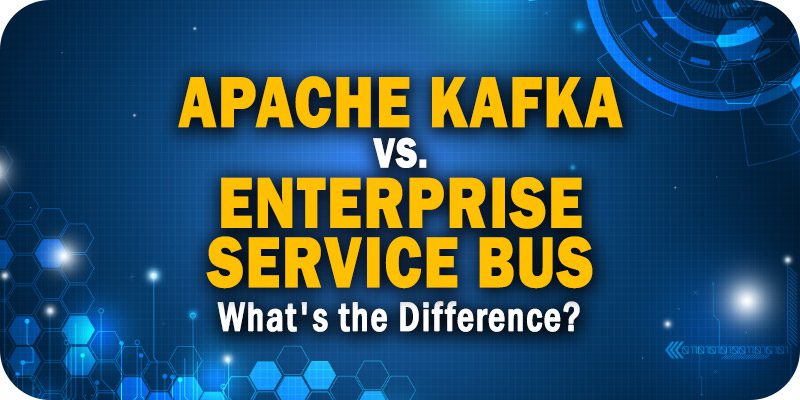Apache Kafka vs. Enterprise Service Bus (ESB); What’s the Difference?


Solutions Review editors compare and contrast Apache Kafka vs. Enterprise Service Bus (ESB) to help you make the right choice.
Typically, an enterprise service bus (ESB) or other integration solutions like extract-transform-load (ETL) tools have been used to try to decouple systems. However, the sheer number of connectors, as well as the requirement that applications publish and subscribe to the data at the same time, means that systems are always intertwined. As a result, development projects have lots of dependencies on other systems and nothing can be truly decoupled.
No matter in which enterprise you work, no matter when your company was founded, you will have the requirement to integrate your applications with each other to implement your business processes. It’s with this in mind that our editors assembled this resource so you can compare Apache Kafka vs. Enterprise Service Bus (ESB) to formulate an integration plan that best suits your needs. Be sure to also consider integration testing during your plan brainstorming and eventual deployment.
Apache Kafka vs. Enterprise Service Bus (ESB)
What is Apache Kafka? Apache Kafka Definition
Apache Kafka is a distributed streaming platform that enables users to publish and subscribe to streams of records, store streams of records, and process them as they occur. Kafka is most notably used for building real-time streaming data pipelines and applications and is run as a cluster on one or more servers that can span more than one data center. The Kafka cluster stores streams of records in categories called topics, and each record consists of a key, a value, and a timestamp.
Key characteristics of Apache Kafka include:
- Event-based data flows as a foundation for (near) real-time and batch processing.
- Scalable central nervous system for events between any number of sources and sinks. Central does not mean one or two big boxes in the middle but a scalable, distributed infrastructure, built by design for zero downtime, handling the failure of nodes and networks and rolling upgrades.
- Integrability of any kind of application and system since technology does not matter. This enables you to connect anything: programming language, APIs like REST, open standards, proprietary tools and legacy applications.
- Distributed storage because there is a lot of complexity behind this and a streaming platform simply has it built-in. This allows you to store the state of a microservice instead of requiring a separate database, for example.
While some processes need real-time processing, you also need to be capable of supporting batch processes:
What is an Enterprise Service Bus (ESB)? ESB Definition
An Enterprise Service Bus (ESB) is an architecture that includes a set of rules and principles for integrating applications together. These are specific integration tooling type. However, vendors who offer these solutions vary greatly in their offerings. The core concept of an ESB is that they enable application integration by putting a communication “bus” between them that lets the applications talk to the bus. This process provides a way for the tool to decouple systems from one another so they can communicate “freely.”
ETL and ESB offer customizable tooling like graphical mappings for doing complex integration. And since ESB tools communicate with the legacy world, there really is no competition between the two offerings. The question is simple: which one do you need for the job?
Apache Kafka vs. Enterprise Service Bus (ESB); What’s the Difference?
Apache Kafka and its ecosystem is designed as a distributed architecture with many smart features built-in to allow high throughput, high scalability, fault tolerance, and failover. Enterprise can integrate Kafka with ESB and ETL tools if they need specific features for specific legacy integration. An ESB or ETL process can be a source or sink to Apache Kafka like any other Kafka producer or consumer API. Currently, most of the top-rated integration tools also have a Kafka connector because the market drives them this way.





















